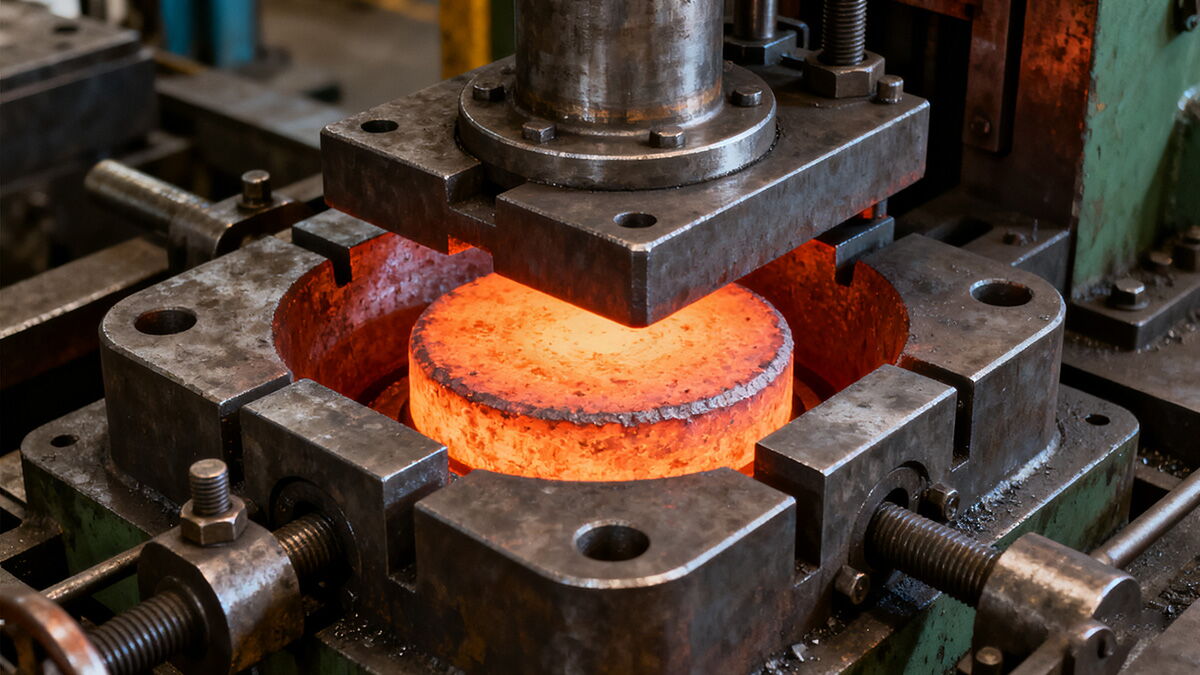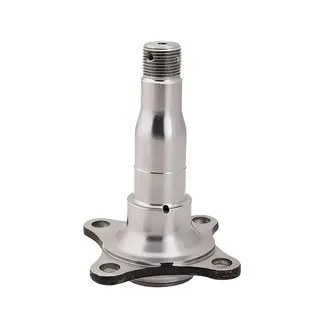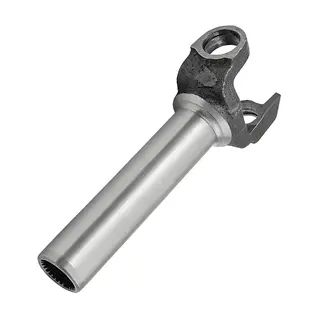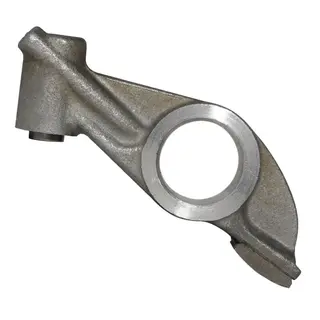Closed-die forging, also called impression-die forging, is a precision forging process where a heated workpiece is placed between two or more dies that contain specially shaped cavities. As the dies are brought together under high pressure, the material flows into the cavities, forming the part’s final shape. Unlike open-die forging, the dies enclose the workpiece, allowing for the creation of complex and precise geometries.

The billet is cut to the required size and heated to forging temperature.
It is positioned in the lower die cavity, while the upper die descends to apply force.
Under repeated hammering or pressing, the metal flows into the shaped cavities of the dies.
Excess material is forced outward as flash, which forms around the edges of the part.
The flash, which cools quickly, helps increase resistance and ensures complete filling of the die impression.
After forging, the flash is trimmed off, and minor finishing may be applied if required.
Dies are custom-designed to match the shape of the final part.
The process can produce parts with excellent repeatability and high dimensional accuracy.
Flash formation is part of the process and is used to increase internal pressure, ensuring sharp detail reproduction.
Requires significant investment in tooling, making it more suitable for medium- to high-volume production.
Dimensional precision: Can achieve tight tolerances and reduce or eliminate the need for machining.
Superior surface finish: Produces smooth surfaces that may require little finishing.
Material efficiency: Optimized die design reduces waste compared to machining from solid blocks.
Excellent mechanical properties: Works with the grain structure to improve strength, fatigue resistance, and durability.
High repeatability: Capable of mass-producing consistent parts.
Versatility: Can reproduce nearly any geometry that fits within the die cavity.
High initial cost: Designing and manufacturing the dies is expensive, making the process uneconomical for short runs.
Equipment investment: Requires powerful hammers or presses and controlled furnaces.
Size limitation: Generally restricted to smaller or medium-sized components due to die design constraints.
Less flexibility: Each part requires its own dedicated die set, limiting adaptability for custom or oversized components.
Mass production of precision components such as gears, connecting rods, crankshafts, and structural parts.
Automotive, aerospace, oil & gas, and machinery industries where tight tolerances and high performance are critical.
Parts that require high strength-to-weight ratios and consistent quality.


